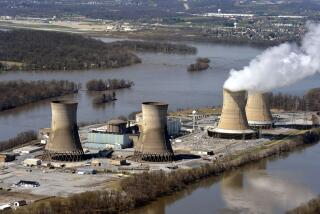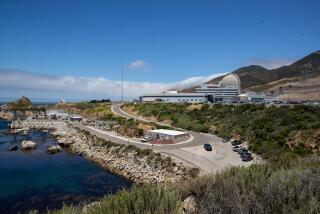Tritium Plant to Be Restarted in December
- Share via
WASHINGTON — One of three tritium-producing nuclear reactors shut down in 1988 because of safety and environmental concerns will be restarted in December and should be producing nuclear weapons fuel by early 1991, Energy Secretary James D. Watkins told Congress on Tuesday.
After the first reactor at the Savannah River plant in South Carolina is back in operation, tentative plans call for restarting the second next March and the third in the fall of 1991.
Meanwhile, Watkins said he now expects the Rocky Flats nuclear plant outside Denver to resume fabrication of plutonium triggers for nuclear warheads in July.
Problems uncovered in Energy Department inspections led to closure of both plants and have prompted calls by environmentalists and anti-nuclear activists for a moratorium on nuclear weapons development.
In recent weeks, defense officials have warned that additional delays in restarting Rocky Flats could jeopardize continued deployment of the United States’ new long-range Trident missiles.
During the shutdown at Savannah River, engineers have moved to eliminate hardware problems and improve maintenance and training procedures.
But even with Savannah River’s three reactors back in operation, Watkins warned that “future tritium requirements cannot be met indefinitely with the existing production reactors . . . in spite of the extensive upgrades currently under way.”
New production facilities are scheduled to become available by the end of the century.
Tritium, which fuels the fusion reaction in thermonuclear weapons, undergoes radioactive decay at the rate of about 5% per year and must be replaced regularly.
When Rocky Flats goes back into operation, Watkins said, workers there will be exposed to significantly less radiation than in the past and the production of nuclear wastes will be reduced.
Even before safety concerns halted operations at Rocky Flats last December, the plant was approaching the waste storage limit set by Colorado Gov. Roy Romer.
More to Read
Sign up for Essential California
The most important California stories and recommendations in your inbox every morning.
You may occasionally receive promotional content from the Los Angeles Times.










